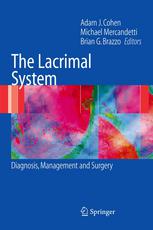

Most ebook files are in PDF format, so you can easily read them using various software such as Foxit Reader or directly on the Google Chrome browser.
Some ebook files are released by publishers in other formats such as .awz, .mobi, .epub, .fb2, etc. You may need to install specific software to read these formats on mobile/PC, such as Calibre.
Please read the tutorial at this link: https://ebookbell.com/faq
We offer FREE conversion to the popular formats you request; however, this may take some time. Therefore, right after payment, please email us, and we will try to provide the service as quickly as possible.
For some exceptional file formats or broken links (if any), please refrain from opening any disputes. Instead, email us first, and we will try to assist within a maximum of 6 hours.
EbookBell Team

5.0
40 reviewsLacrimal surgeries are among the most commonly performed ones in occulopastic surgery. The procedures range from unblocking tear ducts in small children with this very minor congenital dysmorphology to correcting dry eye through surgery. As with many of these procedures, the disorders sound minor but the patients’ lives are seriously affected. Dry eye is more than an inconvenience, sometimes leading to corneal microabrasions, infections, and photosensitivity. Dry eye is caused by any number of systemic autoimmune disorders such as lupus or arthritis, excessive radiation, drug reactions, old age, and lasik and other surgeries.
There are other books reviewing lacrimal surgery as a portion of occuloplastic practice. The editors have chosen, in The Lacrimal System: Diagnosis, Management & Surgery, to address the whole range of lacrimal disorders in one concise, practical volume. By broadening the scope of the subject, the editors hope to meet the needs of residents, ophthalmologists who do some lacrimal procedures, fellows who are learning the special procedures, and experts interested in learning about the most recent modifications of technique.
Table of Contents: Foreword.- Introduction.- Dedication.- Section One Anatomy.- Introduction.- 1 Anatomy of the Lacrimal System.- 2 Gender and Racial Variation of the Lacrimal System.- 3 Histology and Pathology of the Lacrimal System.- 4 Nasal Anatomy and Evaluation.- Section Two Diagnosis.- Introduction.- 5 Congenital Etiologies of Lacrimal System Obstructions.- 6 Acquired Etiologies of Lacrimal System Obstructions.- 7 Evaluation of the Tearing Patient.- 8 Imaging and Clinical Evaluation of The Lacrimal Drainage System.- Section Three Management and Surgical Technique.- Introduction.- 9 The Tear Deficient Patient.- 10 Surgery of the Punctum and Canaliculus.- 11 Lacrimal Trauma.- 12 Primary External Dacryocystorhinostomy.- 13 Primary Endonasal Dacryocystorhinostomy.- 14 Transcanalicular Dacryocystorhinostomy.- 15 Conjunctivodacryocystorhinostomy.- 16 Endonasal Conjunctivodacryocystorhinostomy.- 17 Pediatric Balloon Assisted Lacrimal Dacryoplasty.- 18 Balloon Assisted Lacrimal Dacryoplasty in Adults.- 19 Balloon Assisted Lacrimal Surgery.- 20 9 mm Endoscopic Balloon DCR: A New Less Invasive Procedure for Tearing in Adults.- 21 Radiofrequency DCR.- 22 Powered Endoscopic DCR.- 23 Laser DCR, Part 1: Laser-Assisted Endonasal Endoscopic DCR.- 24 Laser DCR, Part 2: Laser-Assisted Endonasal Endoscopic DCR with the Holmium: YAG Laser.- 25 Laser DCR, Part 3:Laser-Assisted Endonasal Endoscopic DCR with the KTP Laser.- 26 Revision DCR.- 27 The Adjunctive Use of Mitomycin C in DCR.- 28 The Griffiths Nasolacrimal Catheter.- 29 The Sisler Lacrimal Canalicular Trephine.